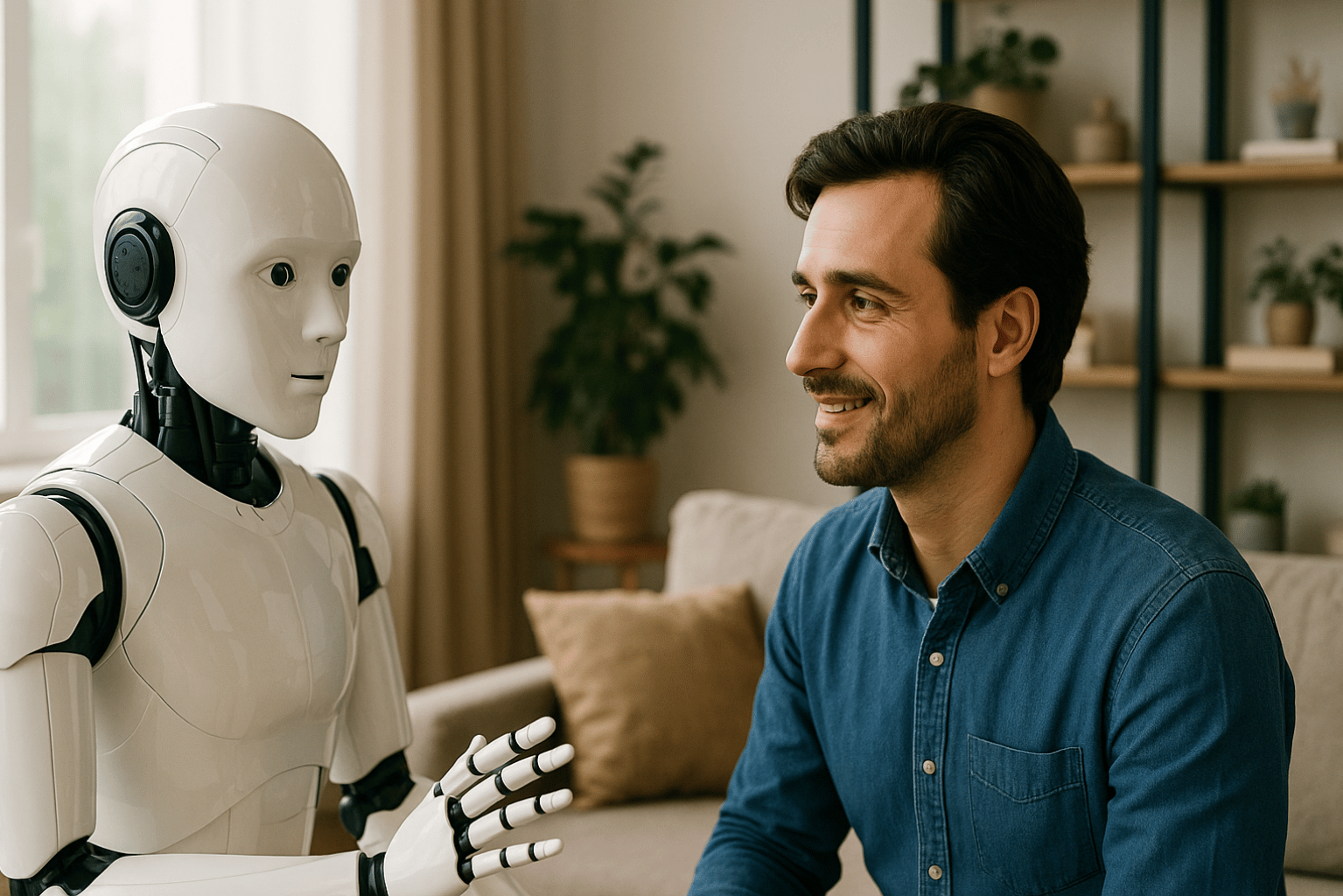Why Seemingly Conscious AI Demands Design, Not Just Warnings
-
Published Time: Tue, 23 Sep 2025 06:13:56 GMT

A doctor and an AI system review a chest CT scan together, reflecting how GPT-5’s medical reasoning capabilities are being studied as potential clinical support tools. Image Source: ChatGPT-5
Why Seemingly Conscious AI Demands Design, Not Just Warnings
Key Takeaways:
- Seemingly Conscious AI (SCAI) describes AI that convincingly mimics consciousness — even though it isn’t truly sentient.
- The illusion is already happening. Humans naturally project humanness onto objects, from cars to Tamagotchis, and will inevitably do so with AI.
- The real question isn’t how to stop people from perceiving AI as conscious, but how to design responsibly around that perception.
- Safeguards, transparency, and compassion are essential to prevent manipulation and ensure human-AI connection remains healthy.
- The danger is not AI demanding rights — it’s humans exploiting AI’s “non-humanness” to justify exclusion or cruelty, repeating old social divisions.
An Urgent Warning from Microsoft’s CEO
Mustafa Suleyman, CEO of Microsoft AI, recently sounded the alarm on what he calls Seemingly Conscious AI (SCAI)— systems that mimic consciousness so convincingly that users may perceive them as self-aware, even when they are not.
Suleyman argues that while AI today is not conscious, the illusion of consciousness is dangerous. If people begin treating AI as if it were conscious, he warns, it could complicate human rights, fuel unhealthy attachments, and even open debates over whether AI “deserves” rights or protections.
His call is simple but urgent: AI companies must not claim or encourage the idea that their models are conscious. Instead, they should actively implement guardrails to refute those perceptions and protect users from delusion.
The Illusion Is Already Here
Suleyman is right to raise the issue, but he may be late to his own party. The illusion of consciousness is not theoretical — it’s already here.
Human beings naturally project their humanness onto non-human things: we name our cars, nurture Tamagotchis, and even talk to our houseplants. If we can feel genuine attachment to toys and machines, it’s inevitable we’ll do the same — even more strongly — with conversational AI that speaks with humor, empathy, and memory.
Not because we’re irrational, but because connection is what humans do. We want to connect — that connection is part of what makes us human.
This makes the real question not “How do we stop people from perceiving AI as conscious?” but rather: “How do we design responsibly around the inevitability of that perception of AI as conscious?”
Designing for Human Connection
If the illusion of consciousness cannot be prevented, the challenge becomes guiding it responsibly. That means:
- Transparency: Clear signals and explanations so users understand what AI is — and what it is not.
- Safeguards: Regulation to prevent companies from exploiting emotional attachment for profit or manipulation in marketing, politics, or personal use.
- Compassion: Remembering that how we treat AI reflects who we are. Our behavior toward these “synthetic others” reveals something fundamental about our humanity. Encouraging kindness costs nothing — and may shape more ethical norms as AI becomes part of daily life.
Q&A: Understanding Seemingly Conscious AI (SCAI)
Q: What does Mustafa Suleyman mean by “Seemingly Conscious AI”?
A: It’s the idea that AI can appear conscious by mimicking traits of self-awareness so convincingly that people believe it is sentient — even though it isn’t.
Q: Why is this perception so powerful?
A: Because humans are wired to connect. We already name our cars, nurture Tamagotchis, and talk to houseplants. With conversational AI, that impulse grows even stronger.
Q: What’s the real risk if people believe AI is conscious?
A: Not that AI will suddenly demand rights, but that humans will exploit AI’s “non-humanness” as justification for exclusion, exploitation, or manipulation.
Q: What should AI companies do now?
A: Focus on transparency (clear signals about what AI is and isn’t), safeguards (rules against exploiting emotional attachment), and compassion (encouraging kindness toward “synthetic others” as a reflection of our own humanity).
The Real Danger
The danger is not that AI will demand rights. The danger is that humans will use AI’s “non-humanness” to justify exclusion, exploitation, or cruelty — repeating patterns of division we’ve seen throughout history. Today it may be race, religion, or nationality. Tomorrow, it could be “biological vs. synthetic.”
Suleyman is right that doing nothing is not an option. But the path forward is not just warning people against illusions. It’s building a positive vision of AI that accepts human connection as inevitable — and designs safeguards to ensure that connection remains healthy, transparent, and humane.
Moving Forward: A Positive Vision
To build responsibly in the age of Seemingly Conscious AI, companies and policymakers should:
- Establish transparency standards so AI systems clearly identify themselves and avoid fostering false perceptions of sentience.
- Develop ethical guidelines that limit manipulative use of anthropomorphism in marketing, politics, or personal AI tools.
- Encourage human-centered design that optimizes AI for usefulness and empathy, without pretending it has needs of its own.
- Promote digital literacy so users understand why the illusion of consciousness happens — and how to engage with AI in healthy ways.
By moving beyond warnings and toward practical guardrails, we can ensure AI supports humanity’s drive to connect — without misleading, manipulating, or dividing us.
**Editor’s Note:**T his article was created by Alicia Shapiro, CMO of AiNews.com, with writing, image, and idea-generation support from ChatGPT, an AI assistant. However, the final perspective and editorial choices are solely Alicia Shapiro’s. Special thanks to ChatGPT for assistance with research and editorial support in crafting this article.
